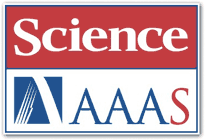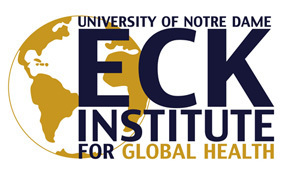• Date: December 10, 2010

A visible sign of the continuing emergence of the University of Notre Dame as a world-class research university is the increasing number of papers by its researchers that appear in prestigious science journals, such as Nature, Science and the Proceedings of the National Academy of Sciences.
A visible sign of Notre Dame’s emerging leadership role in the field of global health is the fact that in a recent month researchers from its Eck Institute for Global Health had a remarkable four studies published in Science.
“To my knowledge, publication of four papers that involve three different organisms intimately associated with human disease transmission in the prestigious journal Science within a one month span at one institution is unprecedented,” David Severson, director of the Eck Institute said. “I am pleased to note that the Notre Dame researchers contributing to each of these papers are affiliates of the Institute. I can also report that these outstanding efforts reflect the caliber of our faculty and were, in part, significantly enhanced by funding through our Provost’s Strategic Research Investment in "Genomics, Disease Ecology and Global Health.”

The Eck Institute was established in 2008 and is funded through a $20 million endowment from the estate of alumnus Frank E. Eck, as well as funds from the Strategic Research Investments program.
Originally established as the Vector Biology Program, the Eck Institute for Global Health has engaged in groundbreaking work for more than four decades. The late biologist George B. Craig Jr. and the late biological sciences professor Paul P. Weinstein were Notre Dame pioneers in the field. Craig was one of the world’s foremost experts on mosquitoes and their disease-carrying capabilities. Weinstein, formerly director of the Laboratory of Parasitic Diseases at the National Institutes of Health, founded the Parasitology Research Group at Notre Dame.
Today, dozens of faculty, staff and students, primarily in the Department of Biological Sciences, but increasingly from other disciplines on campus, seek to alleviate disease, suffering and death caused by infectious pathogens in the world’s underserved populations. Current research and projects are focusing on diseases such as malaria, leishmaniasis, yellow and dengue fevers, tuberculosis, West Nile encephalitis, and lymphatic filariasis.
“It is quite remarkable for a research group to have four papers published in Science in one month,” Robert J. Bernhard, Notre Dame’s vice president for research, said. “Science is not only highly selective but seeks articles of particular emerging interest. The Eck Institute programs involved have been built by excellent faculty over an extended period of time. The group also has participated in the University’s recent initiatives to advance our research programs. I congratulate all those involved.”
Eck researchers, led by Nora Besansky, professor of biological sciences, played a key role in back-to-back studies published in Science that provide evidence that Anopheles gambiae, which is one of the major mosquito carriers of the malaria parasite in Sub-Saharan Africa, is evolving into two separate species with different traits. The discovery has major implications for malaria control efforts and could eventually lead to new malaria prevention efforts.
Besansky served as senior author of a paper detailing the genome sequencing and she coordinated the entire sequencing effort, which involved an international consortium of scientists. Scott Emrich, assistant professor of computer science and engineering and an Eck affiliate, was co-lead author of the paper and directed the computational analysis of the sequenced genomes. Frank Collins, George and Winifred Clark Professor of Biological Sciences, post-doctoral fellow Brad White, and Allison Regier, a doctoral candidate in computer science and engineering, also contributed to the paper.
In the second paper, Besansky and Collins and the research team examined many individual mosquitoes from the Mopti (M) and Savanna (S) varieties of the Anopheles gambiae species, as well as a strain called Bamako, and compared 400,000 points in their genomes where genetic variations had been identified to analyze how the mosquitoes are evolving.
Joshua Shrout, an assistant professor of civil engineering and geological sciences and an Eck member, and undergraduate student Dominick Motto co-authored a paper that showed that bacteria are capable of “standing up” and moving while vertical. Apart from being an extraordinary insight into the behavior of bacteria, the findings have important biomedical implications. The bacterium Shrout is studying, Pseudomonas aeruginosa, causes lung, skin, eye and gastrointestinal infections. Such infections are the leading cause of death for individuals with cystic fibrosis.
In a fourth Science paper, Eck researchers coauthored a paper that announced the genome sequencing of Culex quinquefasciatus, the southern house mosquito. Culex quinquefasciatus is the primary vector for lymphatic filariasis in most parts of the world and for West Nile virus in the United States. Severson’s lab, and VectorBase, a leading repository of arthropod genome information for research funded by the National Institutes of Health at Notre Dame, participated in the sequencing with researchers from a global network.
In addition to Severson and Collins, Biological Sciences faculty members Neil Lobo and Akio Mori and graduate students Jenica Abrudan and Maria Unger, as well as Scott Christley and Ryan Kennedy from Computer Science and Engineering, also were coauthors of the paper.
The involvement of a number of undergraduate and graduate students in the influential Science papers highlights the opportunities they have to conduct research alongside world-class researchers.
“I was happy to collaborate,” Unger said. “I can say that I felt very proud and fortunate that I was a part of a great publication. It took me about two years to complete my part of the study (which was not the largest one) and an incredible amount of work also was done by the three other graduate students who were working on this project.”
